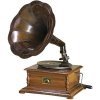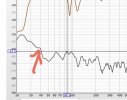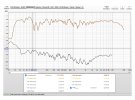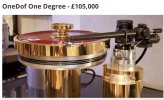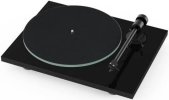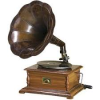My entire childhood was spent listening to live music. I have heard enough masters in studios. I have had digital for over 25 years. Had the best of stuff. I have heard Benchmark which seems to be ASR benchmark umpteen times. When it comes to connecting with music, vinyl is still King. On my set up, the bass that vinyl puts out is exemplary. You must be really joking when you say a vinyl set up is not high end.A gramaphone can be subjectively pleasing and wonderful. It is analog....in the purest form.
But it is not a hi-fidelity system. The dynamic range is limited, the lows are negligent. The mids and highs are heightened. And we can exactly measures where the problem is .....right from the heights and depths of the audio grooves, to the vibration of the needle/tonearm and the passive amplification of the horn. It was accurate for our fathers/grandfathers.
But now we have gone beyond that. We have evolved into electronics and active amplification. Now music has to be produced/reproduced through a medium. And that is where our modern hi-fi debate lie. Fortunately for all concerned, that medium of electrons, electricity, electric signals and transducers to physical waves are all measurable parameters.
And it's due to this property of being measurable that today we can enjoy a hi-fidelity music on our portable smartphone using a wired/wireless headphone/earphone.......in addition to the many speakers drivers at home/studio.

Last edited:


